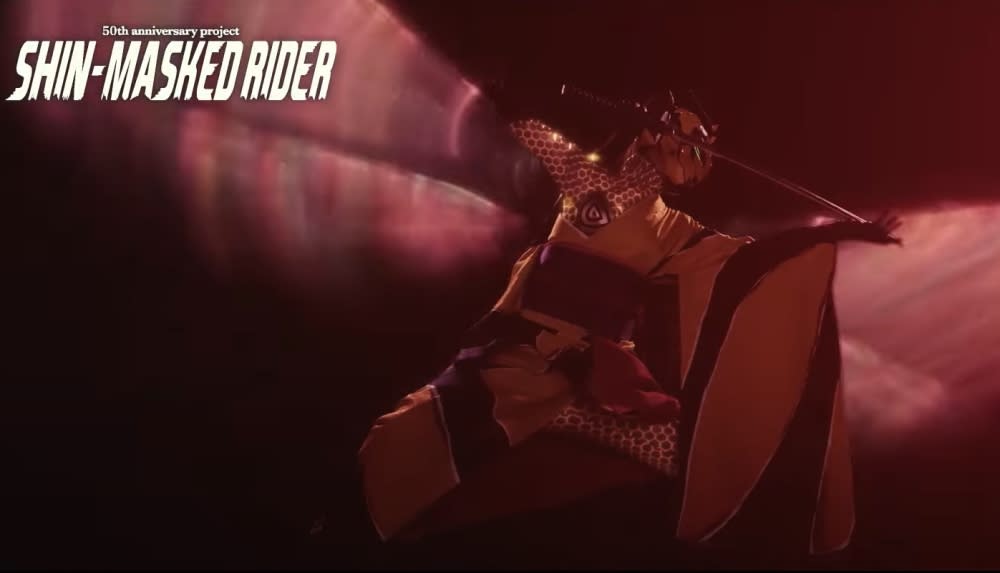 Malay Mail
Malay Mail'Shin Kamen Rider' ― a surprisingly earnest and emotional entry in the Shin Japan Heroes Universe

JULY 15 ― As a kid growing up in the 80s and 90s watching lots of Japanese tokusatsu TV series like Ultraman, Space Cop Gaban and Masked Rider Black, the sudden appearance of what’s being called the Shin Japan Heroes Universe (SJHU), which was officially announced in 2022 and combines new re-imaginings of franchises like Godzilla, Evangelion, Ultraman and Kamen Rider by acclaimed director Hideaki Anno, is truly something to get excited about.
Yes, it didn’t start that way, but the critical and commercial success of Anno’s Shin Godzilla and Evangelion: 3.0 + 1.0 Thrice Upon A Time have somehow resulted in four Japanese studios ― Toho, Khara, Tsuburaya and Toei ― agreeing to form this SJHU joint venture with Anno’s assistance.
Anyone who’s seen Shin Godzilla and Shin Ultraman will know why there’s always a high level of excitement whenever there’s a new Anno adaptation of a beloved tokusatsu franchise because unlike most other reboots, remakes or re-imaginings of existing franchises, Anno has always proven to be very capable of putting his own quirky stamp on the properties without losing sight of what makes them so beloved in the first place, because he’s always been an honest to goodness fanboy.
And now we have Shin Kamen Rider, which arrived in Malaysian cinemas last week to not much fanfare, and to not that many screens as well, but I still jumped at the chance to see it in the cinema the first chance I got.

‘Shin Kamen Rider’ arrived in Malaysian cinemas last week. ― Screengrab via YouTube
Having seen the previous entries in the SJHU, I already knew what to expect from this latest entry in terms of visual style and special effects because the previous entries, despite their relatively big budgets (relative to Japanese productions, but still very much peanuts when compared to Hollywood), have an intentionally lo-fi and homemade charm that pays loving tribute to the franchises’ TV origins.
So when Shin Kamen Rider began in medias res with a high speed chase involving our beloved hero on his trademark motorcycle being chased by two trucks with what looks like a spiderweb and a spider in between the trucks, shot and edited to look very much like one of those cheapo motorcycle chases in the Kamen Rider TV series, I wasn’t bothered in the slightest.
The only shock I got during this opening scene was how bloody the ensuing fight was (and even then, the shots and editing very much resembles the TV show), as our hero easily cuts through all the bad guys with blood splattered all over the place.
It's only after this scene that the audience and the hero, a guy named Takeshi Hongo (a soulful Sosuke Ikamatsu) finally get the chance to find our bearings as Hongo looks in the mirror in shock at the carnage he just committed and finding out that he has hideous alien-looking hands and a monstrous face.
And it’s only from here onwards that we finally get to see a more cinematic presentation of the film, with stylishly art directed sets, elegantly designed lighting and striking camera angles, but with a much more relaxed and less frantic editing strategy when compared to the dizzying editing on Shin Ultraman.
Just like Shin Ultraman, Shin Kamen Rider also has a very episodic narrative shape, with the film oscillating between Masked Rider’s fights with one villain to another and dialogue scenes that are either exposition dumps (to let the audience know how things came to be and to signal where we are in the story) or highly emotional explorations of the guilt that comes in the aftermath of committing violence and our eternal struggle for connection and love.
I’ve read that the film’s story is a condensed adaptation of the first eight episodes of the TV series, which explains the series of varied and strikingly staged showdowns between our hero and a wasp lady, a bat professor, a scorpion lady and more.
All these fights are different in nature, with Anno clearly taking the time to visually distinguish each one of them, with my favourites being the fight with the wasp lady, a striking application of light leaks to convey the wasp lady’s super speed and the fight with Masked Rider 2 aka Hayato Ichimonji (another loving nod to the original 1971 TV series, which invented the Ichimonji character when the actor playing Hongo broke his legs during a motorcycle stunt) which uses its lo-fi CGI to beautiful effect.
But the real kicker for me is how earnestly emotional the whole film is, not only with the Hongo character as he struggles to reconcile his pacifist nature with the more violent superpowers forced upon him as the result of unwittingly becoming Masked Rider, but also the Ruriko character, touchingly played by Minami Hamabe, who walks away with the movie, especially when she rips your heart out after witnessing the monologue she recorded for Hongo before her character’s expected demise.
It’s a genuine moment of beauty in a film that I’m sure no one will see coming, and it makes this already superb film even greater.
* This is the personal opinion of the columnist.


